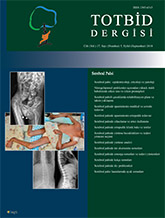
Cerebral palsy (CP) term identify children with motor impairment who need services related to it. Early diagnosis of CP is difficult because the development of neurological signs takes time and may be temporary, especially in premature children. In our country this rate is 4.4 per thousand live births. Recording systems are developed all over the world to estimate the rate of CP in society. CP recording systems are very valuable for tracking the characteristics, incidence and trends of children with SP and for planning services. It is important that the accompanying problems are described carefully and that the severity of the impact on the child with CP is proportionate. Clinical types of SP should be well defined according to muscle tone characteristics or other neurological and functional capacity assessment findings. For treatment; there are a variety of therapeutic approaches based on different theoretical principles, and using different techniques and methods. The small amount of documented evidence of the effectiveness of these different approaches leads to the existence of additional and contradictory therapy approaches. The practitioners should be researchers, facilitators and proposers to the family. They should be informed about psychological and compensatory behavior as well as normal and abnormal movements of the child. The multidisciplinary team involved in the CP treatment, care and rehabilitation process `manages` the functional limitations beyond trying to treat co-operative CP to achieve the autonomous primary goal, depending on the severity of the problem, and improves skills and encourages integration in the child`s family, school and workplace. CP is a lifelong situation. For health care services for adults with CP, evidence-based information is needed to develop and implement best practice of clinical guidelines.